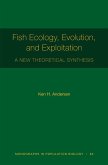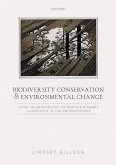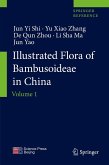"I have been awaiting such a book for a long time. Worm and Tittensor combine three leading theoretical perspectives in ecology--neutral theory, metabolic theory, and niche theory--into a single, elegantly simple model to explain global patterns of species richness on land and in the sea. Their theory is novel, often surprising, and important in its implications for the future of biodiversity on Earth."--Stephen P. Hubbell, University of California, Los Angeles, and the Smithsonian Tropical Research Institute "An impressive step forward in our quest to understand the patterns of life on this planet. This book will guide future research and inform the actions that we must prioritize to conserve biodiversity."--Cristiana Paşca Palmer, United Nations Assistant Secretary General and Executive Secretary of the Convention on Biological Diversity "This eminently readable book probes the very heart of ecology and evolutionary biology by describing and explaining global patterns of species diversity. A landmark work and must-read for every serious student of living nature."--James Estes, author of Serendipity: An Ecologist's Quest to Understand Nature "This book is an outstanding contribution to the long-standing effort to account for the diversity of life on Earth. It summarizes the state of the science, presents a wealth of data on biodiversity in the oceans and on land, and develops a compelling new model to explain major patterns and processes. A Theory of Global Biodiversity sets an agenda for the next decade of research."--James H. Brown, coauthor of Biogeography "A Theory of Global Biodiversity examines the age-old issue of what controls diversity at large scales. While the question is often framed as why are there more species in the tropics, this book rightly tackles the more precise and tractable question of why are there more species in some parts of the globe than others."--Brian J. McGill, University of Maine "The pattern of high diversity at the equator and declining diversity at the poles is one that holds true for many taxa, and a universal explanation for this pattern has long been sought by ecologists, naturalists, and evolutionary biologists, among others. This well-written and organized book brings simple mechanistic ecological and evolutionary theory to bear on the problem. There is no question that this is a significant contribution to the field."--Jay Stachowicz, University of California, Davis
Hinweis: Dieser Artikel kann nur an eine deutsche Lieferadresse ausgeliefert werden.
Hinweis: Dieser Artikel kann nur an eine deutsche Lieferadresse ausgeliefert werden.








